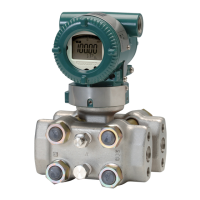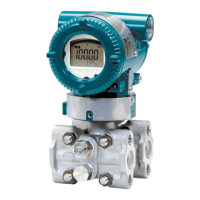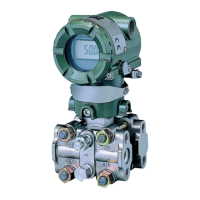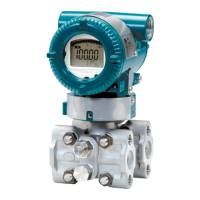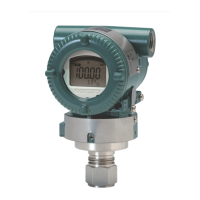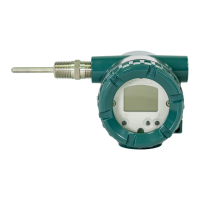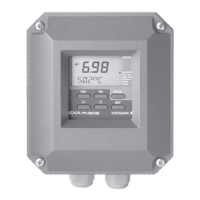<4. Diagnostics>
4-1
IM 01C25T01-06EN
4. Diagnostics
4.1 Self-Diagnostics
4.1.1 Identify Problems by Using HART
CongurationTool
The HART conguration tool can be used to run
self-diagnostics on a transmitter and check for
incorrect data settings.
(1) DD and DTM (excluding EJX HART 5 DTM
basedonFDT1.2)
The Self test and Status commands are available
for self-diagnostics. When Self test is run, the
integral indicator shows an error code and alarm
message if the transmitter detects any illegal
parameter settings or functional faults. See Table
4.5 Alarm Message Summary for probable cause
and countermeasures.
• Procedure to call up the Self test display
[Root Menu] → Diag/Service →
Test (DTM)/Test device (DD) → Self test
If no error is detected, “Self test OK” is displayed on
the conguration tool.
If the specic diagnostic item is known for the
check, you can directly call up the item by using the
Status command.
The status is categorized from 1 to 9 for HART 5,
and from 1 to 10 for HART 7.
See Table 4.5 to determine the status group.
Show an example below to conrm the status of
Status group 1.
• Procedure to call up the Status display
[Root Menu] → Diag/Service → Test device (DD only)
→ Status → Status group 1
If no error is detected, “O” is displayed on the
conguration tool.
If there is an error, “On” is displayed on the
conguration tool, and a countermeasure for that
error is necessary.
Example of display: Illegal P LRV On
Illegal P URV O
Illegal P SPAN O
P SPAN trim err O
P ZERO trim err O
The HART conguration tool diagnoses at each
communication.
When an improper operation is performed, the error
message is displayed.
See Table 4.6 HART Conguration Tool Error
Message.
(2) EJXHART5DTMbasedonFDT1.2
The Device Status commands are used for self-
diagnostics. When Device Status is run, the
integral indicator shows an error code and alarm
message if the transmitter detects any illegal
parameter settings or functional faults. See Table
4.5 Alarm Message Summary for probable cause
and countermeasures.
• Procedure to call up the Device Status display
Device Status
If no error is detected, “Status: Normal” is displayed
on the conguration tool.
If the specic diagnostic item is known for the
check, you can directly call up the item by using the
Diagnostic List in the Device Status display.
The Diagnostic List is categorized to Device Status,
Hardware Failure, Transducer Status, Diag Status,
and Conguration.
See Table 4.5 Alarm Message Summary.
If no error is detected, color symbol which shows
Normal State is displayed on top of the error
message.
If color symbol which shows Error State is
displayed, there is an error and a countermeasure
for that error is necessary.
The HART conguration tool diagnoses at each
communication.
When an improper operation is performed, the error
message is displayed.
See Table 4.6 HART Conguration Tool Error
Message.
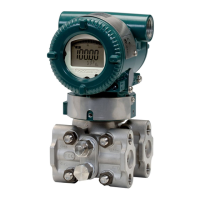
